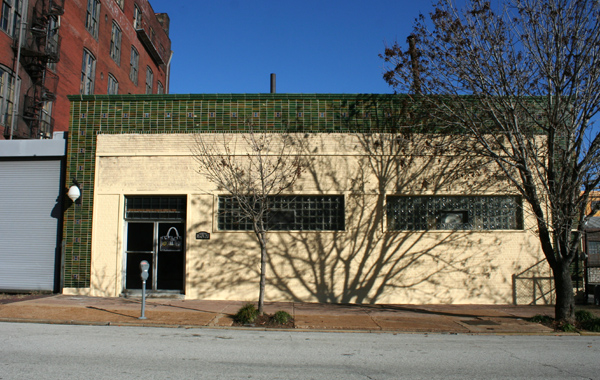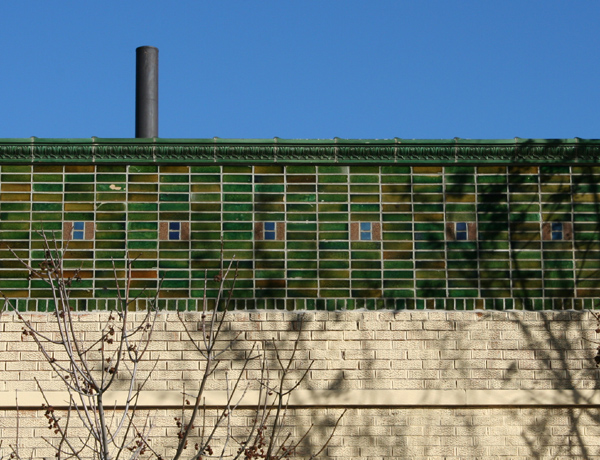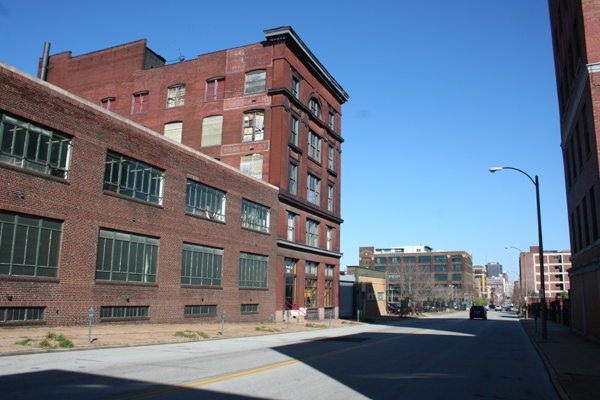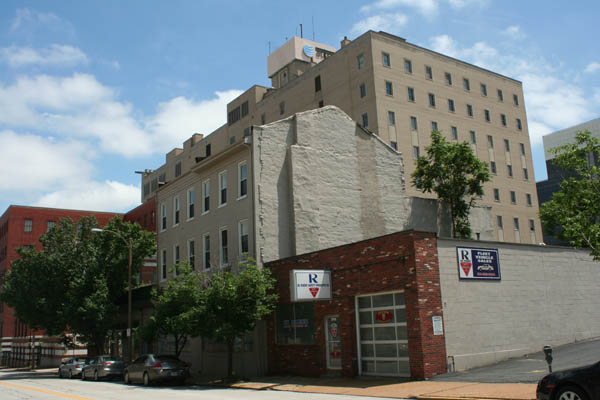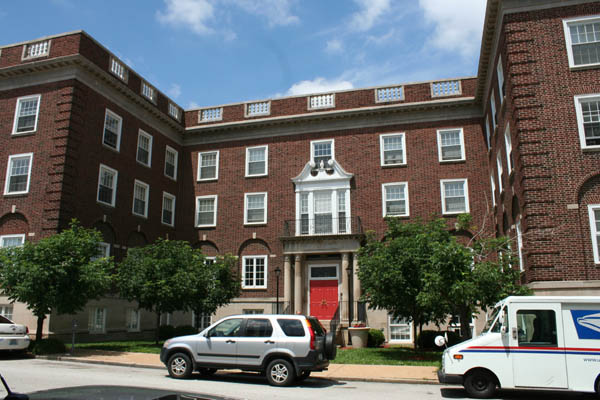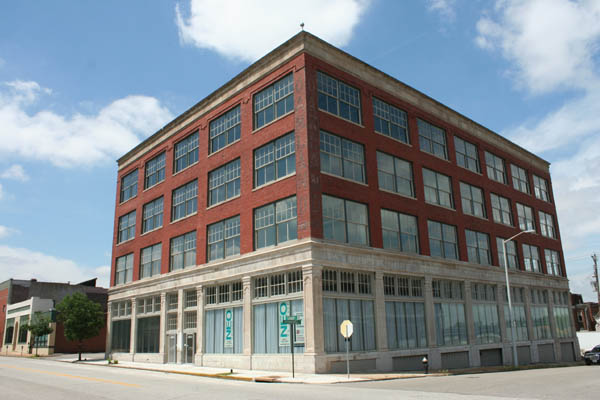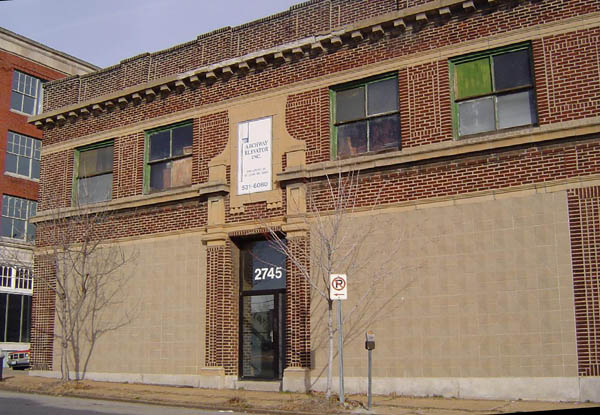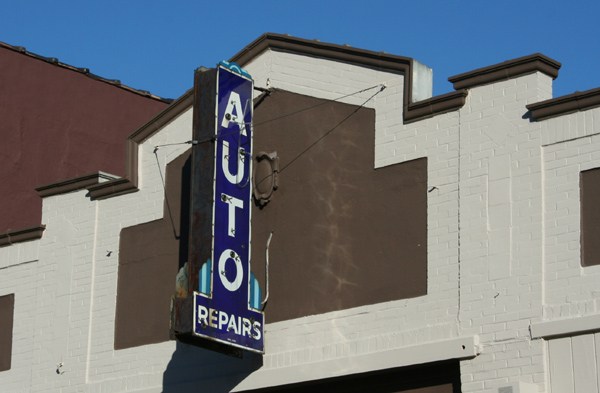Built St. Louis > > Central Corridor > > Midtown East > > Locust Street
|
Locust Street has undergone a quiet revival since 2000. One commecial building after the next has been renovated into a series of trendy restaurants, clubs, and retail stores. |
|
|
2637 Locust Street
A once-expansive storefront window has been filled in, but the beautiful olive-green glazed brick remains around the edge. This sort of mottled coloration, in shades from green to caramel brown, was favored by St. Louis builders in the years before World War I. |
|
|
2647 Locust Street This 5-story building with its heavy detailing retains at least two layers of faded ghost signs on both party walls. Most are illegible due to fading and the double-layering. Most recently home to Apollo Suntan Supply / MegaSun Inc, it has at least one apartment, and has housed a wide variety of enterprises, including commercial retail and storage in recent decades. A company named Med-Science Electronics was based there in the 1960s. A clothing factory, Schwab Clothing Company, was located here in 1914. |
|
|
A handful of first-generation buildings remain, from the days when this area was residential in character. These row houses have been converted to business uses. |
|
|
Phyllis Wheatley YWCA
Originally a shelter for young single working women, this became home to the city's first black YWCA in 1941. Vacated in the late 1980s, it was re-opened as the low-cost YWCA Phillys Wheatley Apartments in 2004. |
|
|
More Automobile Company
Originally a warehouse and showroom / sales floor for the Marmon, an early luxury automobile, this handsome building was part of Automobile Row. Like most such buildings along Locust, it features massive concrete frame construction, and had a large freight elevator for moving automobiles between floors. More closed in 1928, and other auto companies such as the Mississippi Valley Motor Company occupied the space into the 1940s. A variety of occupants followed, including a chemical company and a realtor. Following a renovation in 2008, it is currently known as the Oakland Building, home to the NEO on Locust event space. |
|
|
Autocar Sales and Service Building
Home to a series of short-lived automotive dealerships from the time of its construction until the late 1930s, this was one of the first entries onto Automobile Row. Large ground floor windows enticed passersby with prominent views of the automobiles displayed within. Filled in with concrete block in the 1960s, those same windows were restored in a 2000s renovation. |
|

